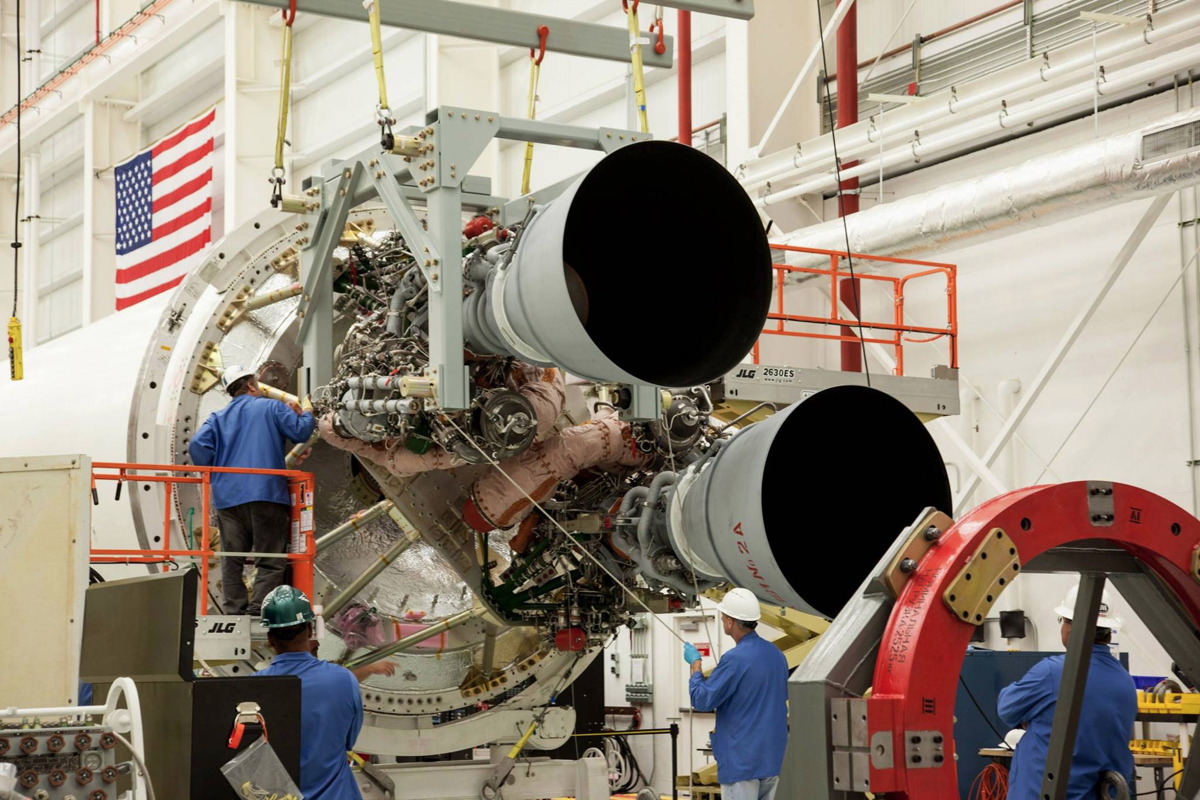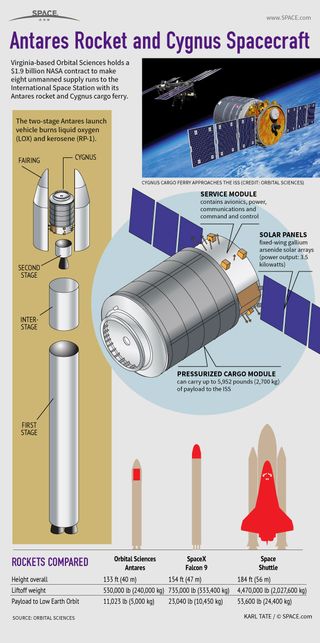Orbital ATK Poised for Return to Flight After Rocket Explosion

LAS CRUCES, N.M. — Following a devastating loss of vehicle last year, Orbital ATK is ready to get back to business sending cargo to the International Space Station.
The company will send one cargo mission to the orbiting laboratory aboard an Atlas V rocket (made by United Launch Alliance) this December, and another in March of next year. The company's Antares rocket, which exploded seconds after liftoff on Oct. 28, 2014, will launch again in the first half of 2016, according to company representatives.
Frank DeMauro, vice president of human space systems at Orbital ATK, spoke about the company's current status at the International Symposium of Personal and Commercial Spaceflight (ISPCS) today (Oct. 8) in Las Cruces, New Mexico. He described the loss of vehicle as "painful," but emphasized that only one day after the accident, "the company embarked on figuring out how we were going to return to flight."

Orbital ATK was formed from the merger, finalized in February, of Orbital Sciences Corp. and Alliant Techsystems Inc. (ATK). The company sends cargo to the space station in its Cygnus spacecraft, and made three successful deliveries to the station between 2013 and 2014. NASA announced in August that it had ordered two more cargo deliveries to the station by Orbital ATK, as part of a Commercial Resupply Services (CRS) contract signed in 2008. Those deliveries will be made in December and March using the Atlas V rocket, and an upgraded version of the cargo spacecraft called the Enhanced Cygnus, which has a bigger cargo module than the regular Cygnus, DeMauro said.
Orbital ATK had planned to fly the Enhanced Cygnus on future cargo missions, DeMauro said. He praised the collaboration of the Orbital ATK team and ULA in making the Cygnus vehicle compatible with the Atlas V in such a short period of time.
The members of the Antares team, meanwhile, are working to get the rocket ready for flight. One of the major changes to the new rocket will be the use of two RD-181 main engines. A "hot fire" test of the engines is scheduled for early 2016 at NASA's Wallops Flight Facility.
"Antares made great progress in getting ready for return to flight," DeMauro said. "The first flight engines have been delivered, they've been integrated on the vehicle. […] So really great job by the Antares team getting ready for that."
Get the Space.com Newsletter
Breaking space news, the latest updates on rocket launches, skywatching events and more!
Follow Calla Cofield @callacofield. Follow us @Spacedotcom, Facebook and Google+. Original article on Space.com.
Join our Space Forums to keep talking space on the latest missions, night sky and more! And if you have a news tip, correction or comment, let us know at: community@space.com.

Calla Cofield joined Space.com's crew in October 2014. She enjoys writing about black holes, exploding stars, ripples in space-time, science in comic books, and all the mysteries of the cosmos. Prior to joining Space.com Calla worked as a freelance writer, with her work appearing in APS News, Symmetry magazine, Scientific American, Nature News, Physics World, and others. From 2010 to 2014 she was a producer for The Physics Central Podcast. Previously, Calla worked at the American Museum of Natural History in New York City (hands down the best office building ever) and SLAC National Accelerator Laboratory in California. Calla studied physics at the University of Massachusetts, Amherst and is originally from Sandy, Utah. In 2018, Calla left Space.com to join NASA's Jet Propulsion Laboratory media team where she oversees astronomy, physics, exoplanets and the Cold Atom Lab mission. She has been underground at three of the largest particle accelerators in the world and would really like to know what the heck dark matter is. Contact Calla via: E-Mail – Twitter









